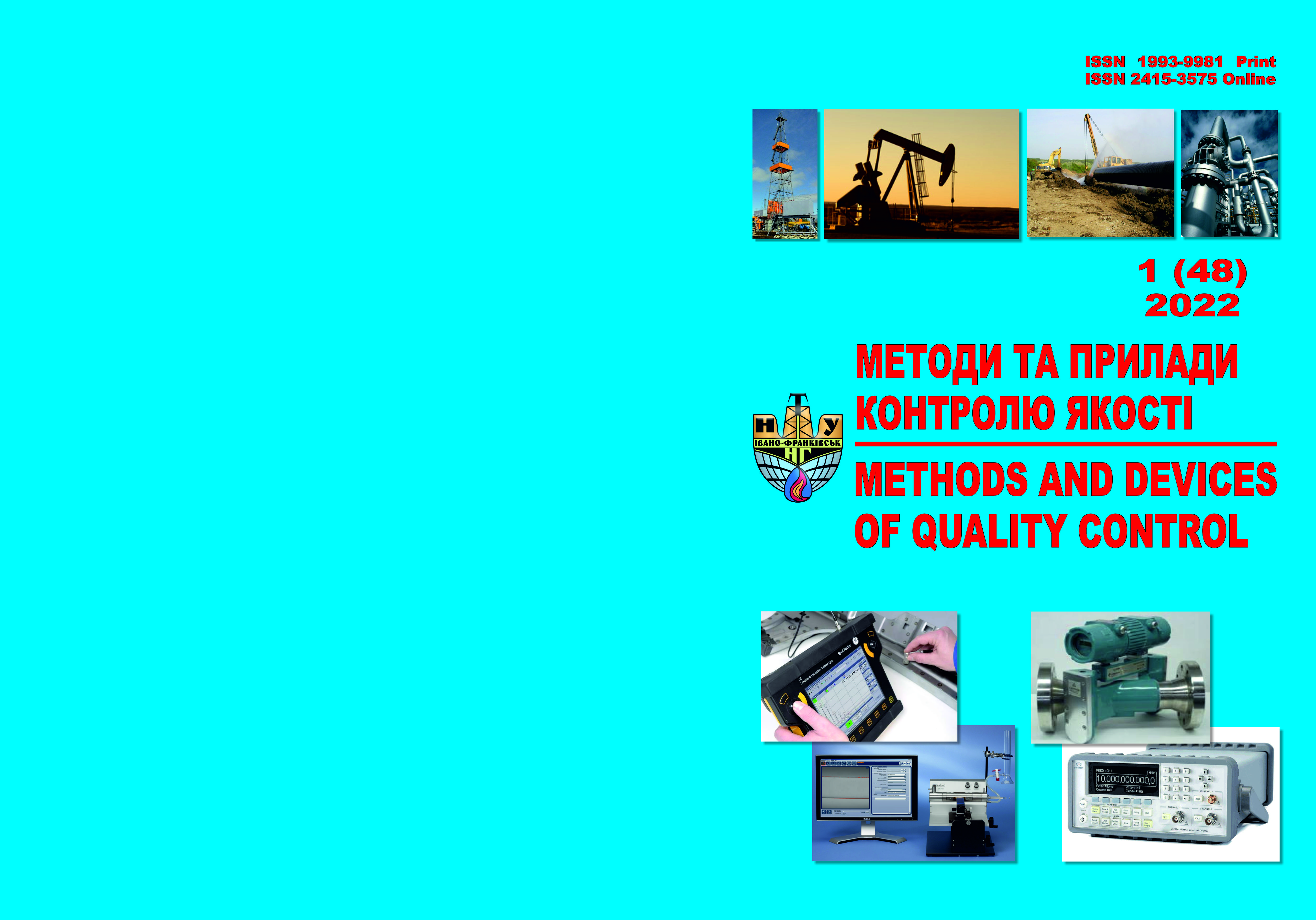АЛГОРИТМ ВИЗНАЧЕННЯ ДИНАМІЧНОГО ПОВЕРХНЕВОГО НАТЯГУ МЕТОД ПУЛЬСУЮЧОГО МЕНІСКА
DOI:
https://doi.org/10.31471/1993-9981-2022-1(48)-36-43Ключові слова:
рідинний меніск, капілярна поверхня, гістерезис, пульсація, поверхневий натяг, структура, алгоритм, системаАнотація
Шляхом математичного моделювання квазістатики капілярних поверхонь типу лежача крапля отримана методологічна база дослідження поверхнево-активних речовин за динамікою поверхневого натягу методом пульсуючого меніска. Сутність методу полягає в тому, що, шляхом прямої і зворотної подачі газу у меніск, реалізується процес пульсації меніска в околі максимального тиску в ньому, значення якого однозначно визначає поверхневий натяг на кожному циклі. Ефект полягає в тому, що меніск, при кожному циклі вимірювання, не захлопується після моменту досягнення максимального тиску у ньому, а переходить у новий стійкий стан рівноваги, тобто процес адсорбції поверхнево-активних речовин не припиняється. Завдяки цьому запропонований метод відповідає точності вимірювання поверхневого натягу за методом максимального тиску у бульбашці і оперативності методу лежачої краплі. Можливість реалізації запропонованого методу теоретично обґрунтовано шляхом розробки математичної моделі процесу пульсації меніска в околі максимального тиску у ньому в системі замкнутій відносно кількості газової фази. На основі теоретичних досліджень результатів моделювання запропоновано структурну схему і розроблено алгоритм процесу визначення динамічних характеристик поверхневого натягу.
Управління процесом контролю здійснюється персональним комп’ютером через проміжний пристрій збору даних NI USB–6009. Це обумовлює необхідність розроблення алгоритму керування процесом вимірювання, а також забезпечення коректної обробки отриманих даних за описаною вище методикою. Дана умова була реалізована у програмному середовищі у вигляді віртуального приладу. Віртуальна складова приладу виконана за допомогою графічного програмного забезпечення LabVIEW , то замість коду в ньому використовується візуальні складові. Зручне керування роботою процесом вимірювання досягнуте тим, що на передню панель програми виведено усі налаштовуванні параметри у вигляді віртуальних кнопок, перемикачів, вікон вводу і вибору вхідної інформації, які відповідають конструкції установки. Для ефективної роботи підійде будь-який персональний комп’ютер, що має вільний USB – порт і встановлену програму LabVIEW, що забезпечить роботу даної конструкції.
Завантаження
Посилання
V. B Faynerman, V.YA. Umansʹkyy, B.S. Horelik, D.O. Lastkov, O.H.Kozakov, O kontrole soderzhanyya orhanycheskykh soedynenyy v pytʹevoy y pryrodnoy vode metodom mezhfaznoy tenzyometryy. - Vestn. hyh. epyd. – 2006. – T. 10, № 1. – S. 181 - 185.
O. H. Malʹko, A. O. Malʹko, Matematychne modelyuvannya protsesu pulʹsatsiyi ridynnoho meniska v okoli maksymalʹnoho tysku: 6 -ta Mizhnarodna naukovo-praktychna konferentsiya ITKI - 15, Prykarpat·sʹkyy natsionalʹnyy universytet, Ivano-Frankivsʹk, 2015. – S. 214 – 216.
O. H. Malʹko, A. O. Malʹko, Systema operatyvnoho kontrolyu orhaniky u pryrodniy i pytniy vodakh. : 8-ma Mizhnarodna naukovo-praktychna konferentsiya ITKI - 17, Prykarpat·sʹkyy natsionalʹnyy universytet, Ivano-Frankivsʹk, 2017. – S. 426-429.
Rukovodstvo polʹzovatelya y tekhnycheskye kharakterystyky USB–6008/6009 [elektronnyy resurs] – Rezhym dostupu: ftp://ftp.ni.com/pub/ branches/russia/daq/ni_usb_6008_6009.pdf – Nazva z ekranu.
YU. S. Mahda. LabVIEW: praktycheskyy kurs dlya ynzhenerov y razrabotchykov. – M.: DMK Press, 2012. 208 s.


.png)




